Why is my cat drinking so little? How much water should cats drink every day to cover their needs? And when should I start worrying about my cat not getting enough water?
Has your cat’s water bowl been sitting there untouched for days? Is your feline friend completely ignoring it, just walking past and showing no interest in taking a few sips of water? Does your kitty not appear to be thirsty at all? Are they not even taking a quick sip of the cool water? Hold on, though, it’s really important for cats to drink water if they want to stay healthy, right? What could possibly be causing your furry friend to drink very little or nothing at all?
It’s time to take a closer look at the drinking habits of cats. What can you do to make sure your feline buddy always gets enough to drink?
Has your cat stopped drinking or are they drinking too little? Possible causes
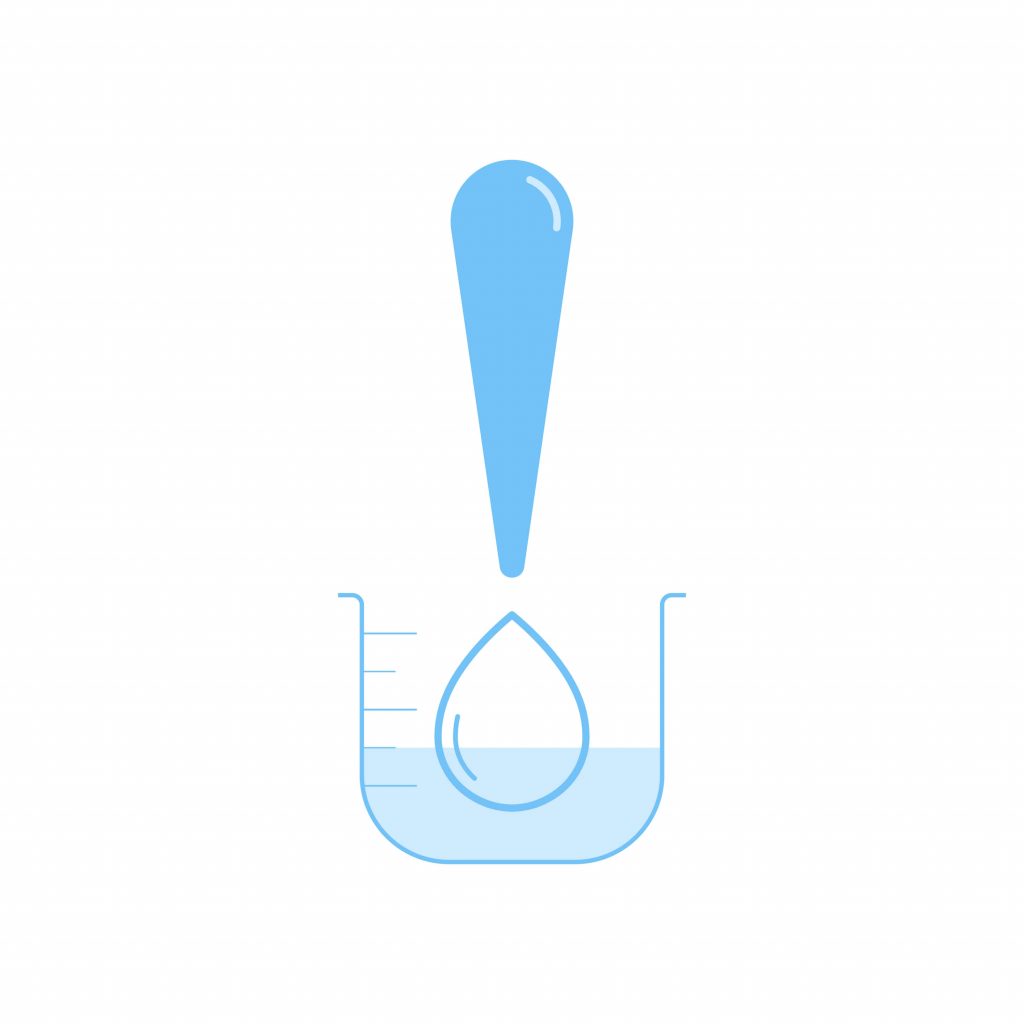
What could be causing your cat to drink very little or nothing at all? There are many different possible reasons. On the one hand, how much liquids they need depends on the food your cat eats; on the other hand, your cat’s physical condition plays a key role.
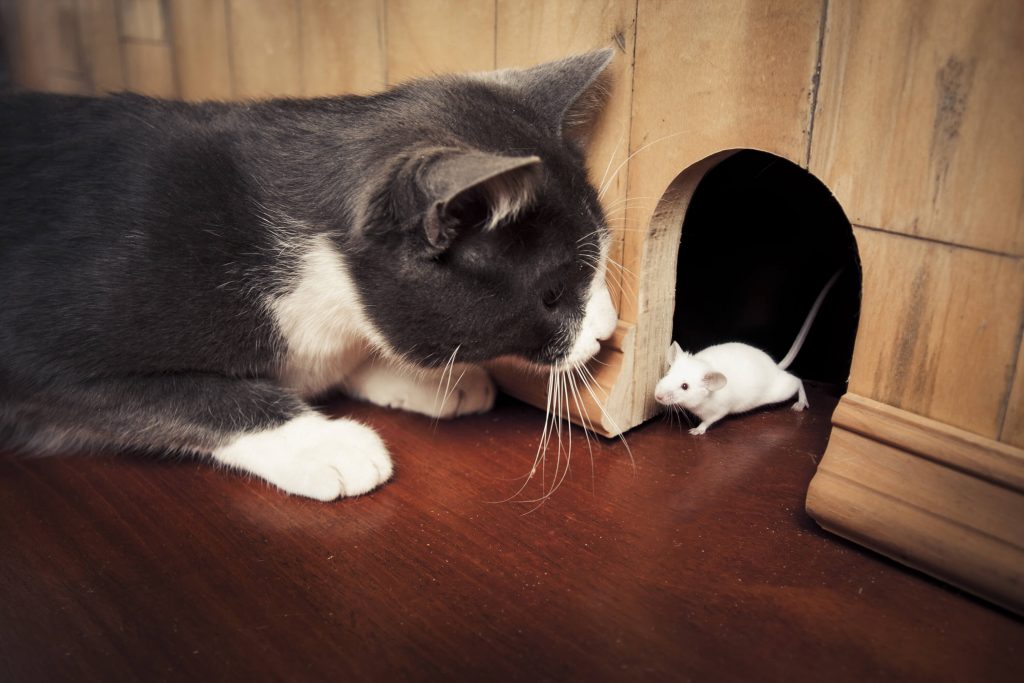
NOTE:
Why do cats sometimes drink so little?
Well, cats are hunters and carnivores, and this means they feed themselves by going on the hunt. When they catch smaller vertebrates, they consume them entirely – including parts of the innards, bones and tendons. When they eat this way, they also absorb water. Thanks to the oxidation water from their prey, they’re able to cover part of their own water needs!
Cat stops drinking after having some kind of surgery
What happens when a cat is unable to hunt or access water some other way? How do cats get the fluids they need in this case? This might happen if your feline friend has just undergone a surgical procedure – such as getting neutered – and is physically unable to provide itself with food and fluids. The day before the operation, you should stop giving your cat food starting in the evening. Remember, your kitty should have had its last bite of food roughly eight hours before the operation!
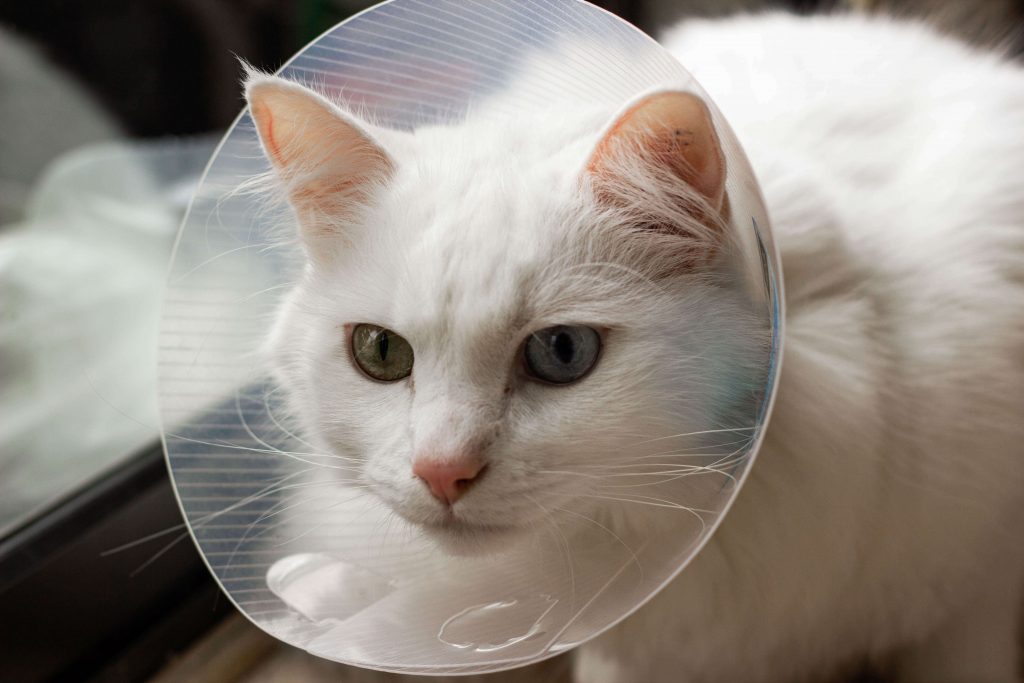
TIP:
As soon as you bring your cat home after having an operation, you should make sure they have a warm, well-padded place to rest that’s close to the floor. Also make sure they have close and easy access to water and a litter box that doesn’t require that they jump up or down.
Has your senior cat stopped drinking?
Do you have a senior cat at home? Old cats don’t drink as much as they did when they were young. This is because their body is changing. Just like us humans, our kitties’ sense of thirst changes over the course of their lives. Senior cats just aren’t as thirsty as they used to be! Some seniors also have problems getting food into their mouth. For example, an elderly feline might sometimes have a hard time with dry food. If that’s the case, try offering them a high-quality wet food that smells and tastes more intense, because it will have two key advantages: it will be easier to chew and also contain more liquid.
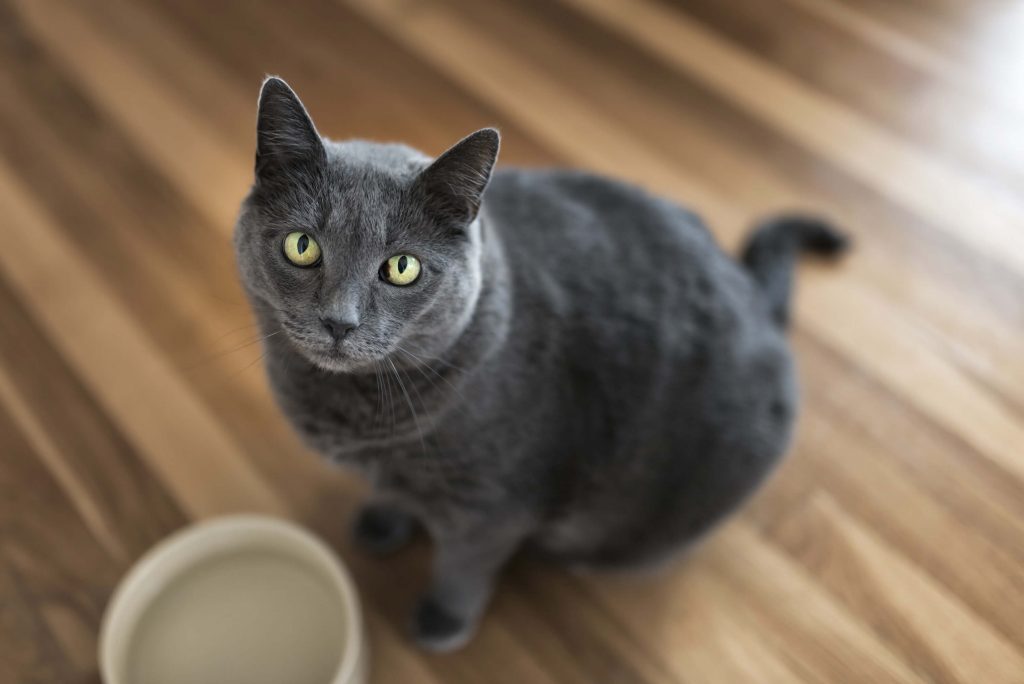
Cat suddenly stops drinking
Did your cat used to chug water from their bowl but then suddenly stopped? If your furry friend has access to the outdoors, it’s possible that they’ve been getting their liquids while out on the prowl. There are plenty of water stations out there, including garden ponds, birdbaths and puddles. And in the colder seasons, your cat’s need for fluids is not as high as in summer. What you should do is closely track their drinking behaviour and how much you put in their bowl over a longer period of time. Also check your cat’s physical condition on a regular basis. If they seem as physically fit and cheerful as usual, then you can be pretty sure everything’s fine!
Cat isn’t drinking? When does it become dangerous?
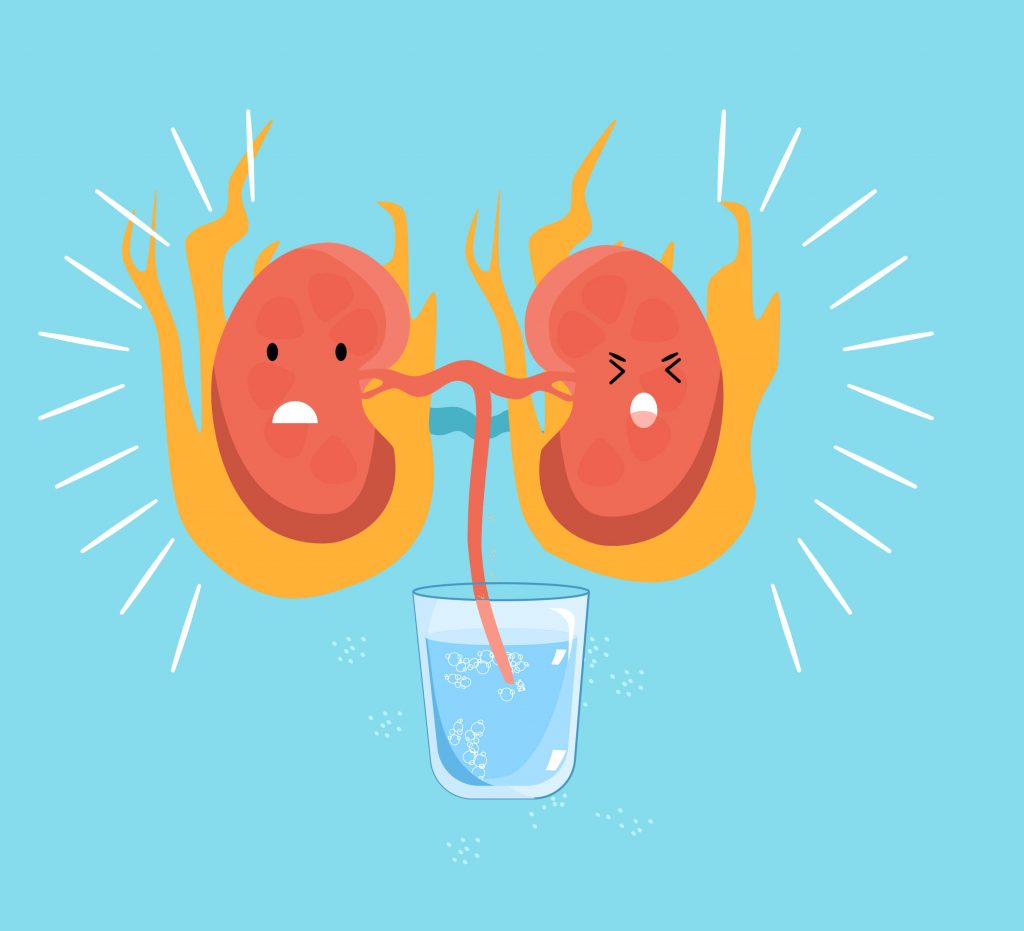
At what point does it become dangerous for your cat after they’ve stopped drinking? Don’t forget, cats are tough little creatures. These furry beasts can go without food for several days, just by drawing on their reserves. It’s a different story, however, if your cat’s not drinking enough liquids, because a lack of fluids can become dangerous after just a few days! When your cat’s body doesn’t get the fluids it needs, or when your cat loses more fluids than it takes in, things can get difficult pretty quickly. Liquids are very important because they transport the substances a cat’s body needs to be able to function properly.
WARNING!
When a cat isn’t drinking enough and starts to lack fluids, you might see the following symptoms:
- Dull-looking eyes
- Reduced skin elasticity
- Dry mouth
- Lack of appetite
- Low amounts of urine
- No desire to play
- Severe fatigue
Cat’s water needs
How much water should a cat drink on a daily basis? The recommended amount is 50 millilitres per kilo of body weight per day. That’s the minimum! But don’t forget, it’s never easy to tell whether a cat is drinking enough! Why? Because it’s impossible for us to follow our kitties everywhere throughout the day, so we’re never going to know exactly how much water they actually consume. Outdoor cats with access to external water sources will have different water needs than indoor cats, which usually only consume the food and water we put in their bowls. Also, remember that if your cat eats wet food, they’ll need less water than cats that are given dry food.
RULE OF THUMB:
At least 50 ml of water per kilogram of body weight every day¹:
For example, a cat that weighs 3.5 kg will need to drink 175 ml of water per day
¹Source: Heere Veterinary Practice (January 28, 2020): “How much should a cat drink?” online at How much should a cat drink? – Tierarztpraxis Heere (tierarztpraxis-heere.de), accessed on 10 Nov. 2023 (in German only)
How soon should you consult a vet after noticing your cat isn’t drinking anymore?
If my cat stops drinking, how will I know when it’s time to go to the vet? If your cat hasn’t eaten anything or had any water for two days and you’re also noticing changes in their behaviour, you should consult a veterinarian, just to be on the safe side. When a cat lacks fluids – the technical term for this condition is dehydration – it’s not something to be trifled with. In fact, dehydration can lead to a number of health problems, including the following:
- blocked blood vessels
- Painful muscle contractions
- Altered blood pressure
- Impaired kidney function
- Persistent constipation
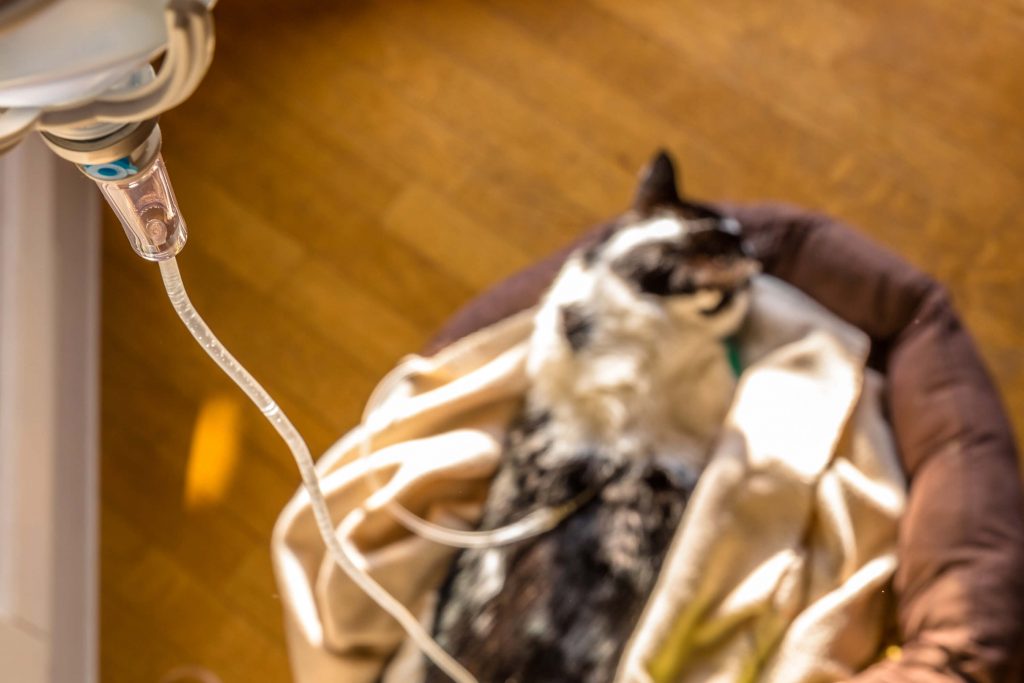
CAUTION!
When a cat is in the advanced stages of dehydration, the lack of fluids can even be life-threatening!
For kittens, seniors and sick cats, a lack of replenishing fluids can become dangerous after just one day.
What liquids do cats like to drink?
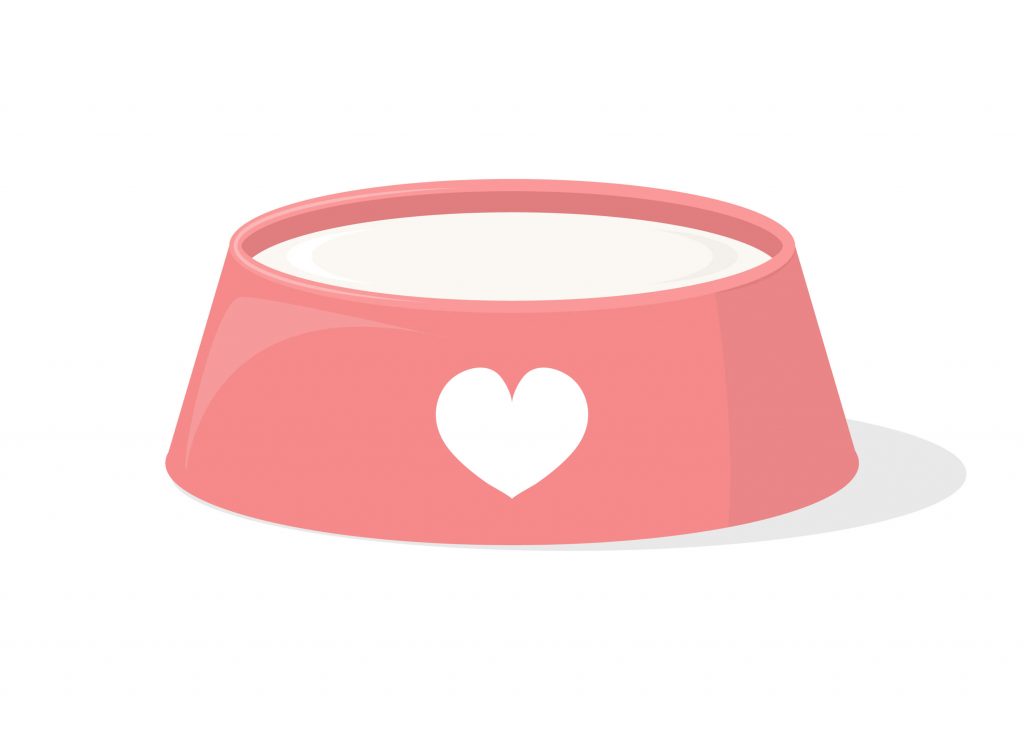
Is there a drink all cats love? The best choice for your cat is basically always going to be water. But no two cats will have the same preferences, and there’s no single favourite water that all kitties will love. Every cat has their own specific taste, which means that one kitty will prefer to drink tap water straight from the tap, while the other will enjoy drinking fresh water from a bowl or watering can. Try to offer your cat different variations and see which one it prefers. You’ll find out pretty quickly what kind of a drinker your cat is!
CAUTION!
If your cat likes to drink from a watering can, please make sure the water in the watering can does not contain fertilizers, and make sure to refill the can with fresh water every day.
Which type of water is best for cats?
Is there a type of water that’s best for cats? Your cat should always have access to fresh water in clean water bowls. The water should not be left in the bowl for longer than one day, as bacteria can settle in standing water and make your cat sick. Tap water is perfectly fine if it’s not too hard. If your kitty doesn’t like the smell or taste of the water that comes from the tap in your home, you can also offer them bottled still water or a special cat water. Please don’t give your cat carbonated water! Cats usually react sensitively to water with bubbles in it.
Should cats drink milk?
Is milk a suitable drink for cats? The image of a cat slurping milk is still firmly anchored in people’s minds today. It probably originated in an era where furry felines carried out mouse-catching duties in barns and stables and were paid with cow’s milk after milking. A cat that’s used to drinking this kind of cow’s milk from an early age may have no problems digesting it. But most cats won’t tolerate cow’s milk, because it contains lactose, which can cause digestive problems.
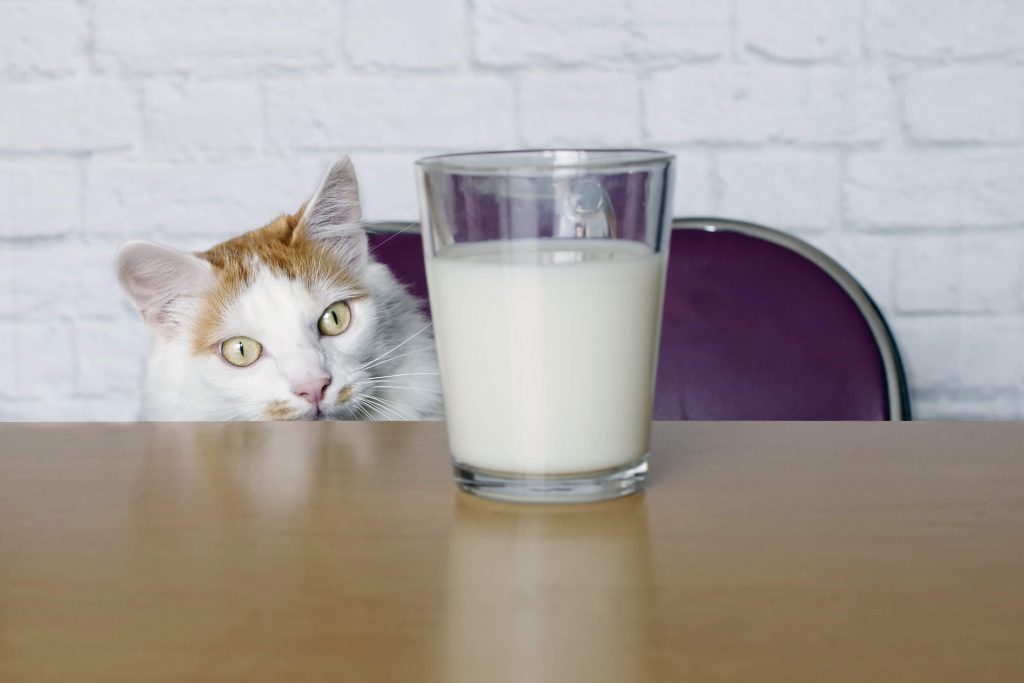
TIP:
If you still want to give your cat milk, you can use special, lactose-free cat milk from specialist retailers. You should use this milk in moderation only, however, because it’s very high in calories and will never be a substitute for fresh water!
Encourage your cat to drink
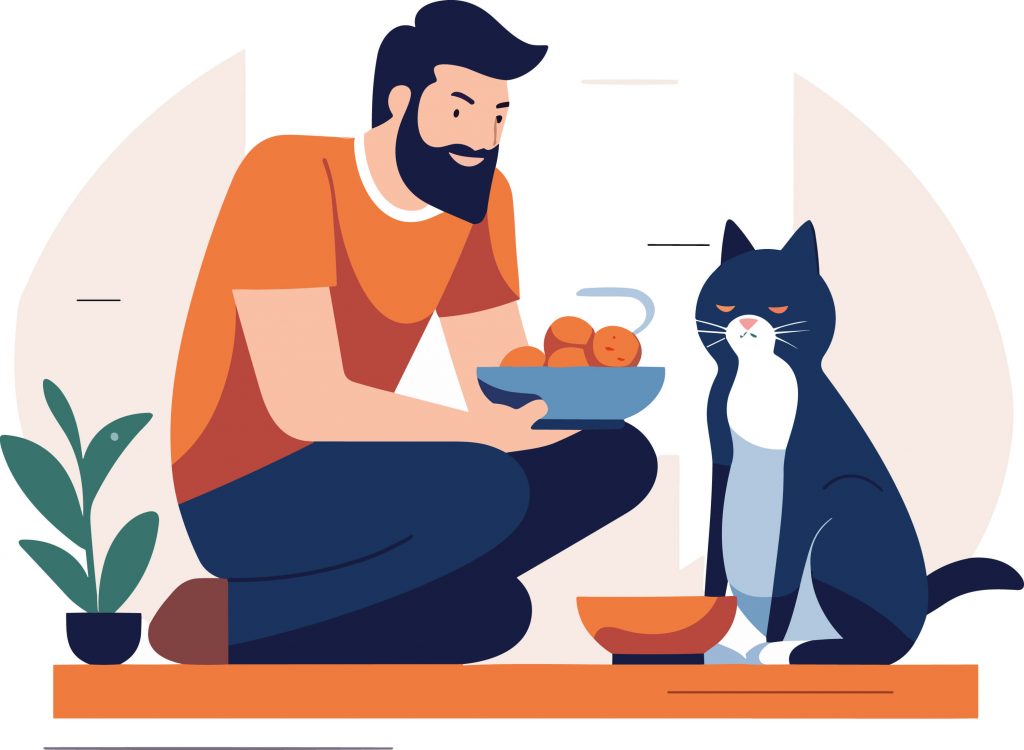
How can you encourage your cat to drink more? Make sure your cat has plenty of opportunities to drink: place several water bowls in different spots throughout your home and remember to keep their food and water sources separate. In general, cats don’t like to eat their food right next to their water source. Also, don’t forget that most cats prefer to drink running water. You can exploit this by offering your cat the opportunity to drink running water as often as possible. If your cat drinks more, you’ll quickly notice the positive effects: for example, your furry friend’s mouth will smell as if they’d just gargled!
Find the perfect spot for your cat’s water bowl
Make sure you find the perfect spot for your cat’s water bowl. Even though cats have been living with us for 10,000 years, some of their behavioural characteristics are still the same as their wild ancestors. For example, many cats don’t like having their food and water in the same place. This means you should never place food and water bowls right next to each other. Instead, place them at a distance from one another. And, of course, your cat’s litter box should never be next to their food. Always choose a different spot as far away as possible for this.
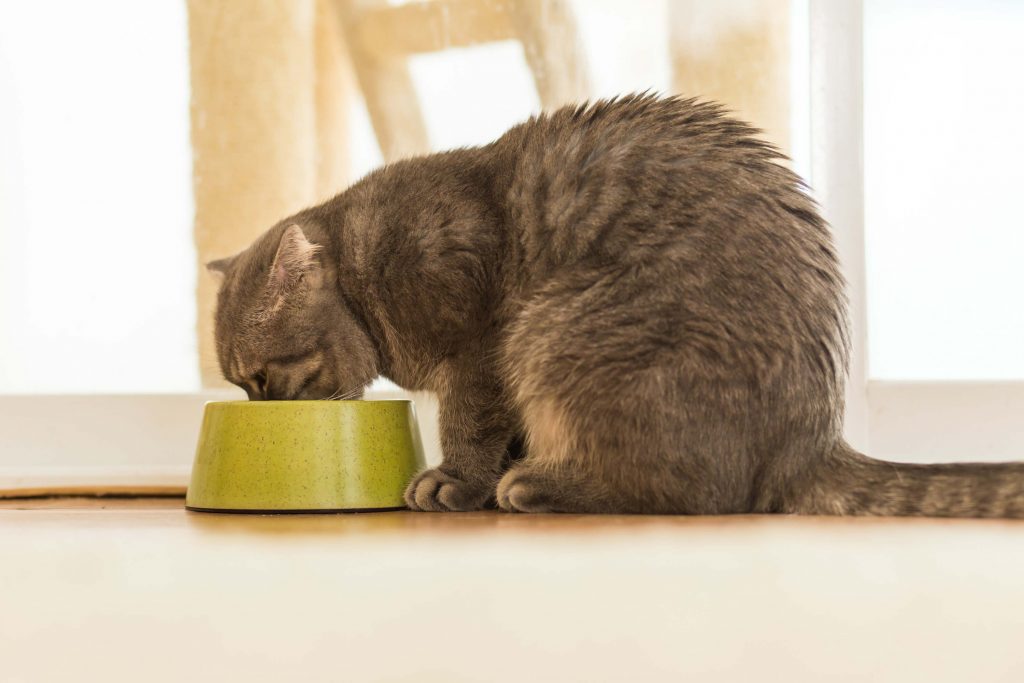
Does your cat push its water bowl around?
Some cats love water games! They like to push their water bowl around. There are even some cat breeds, such as the Maine Coon, that are natural water lovers and love to splash around. They’ve even been known to dip their food into the water before eating it. This usually leads to the water being distributed generously throughout the room…
Does your cat knock over its water bowl?
Some cats also enjoy knocking over their water bowl! What exactly causes them to do this? Is it the pure instinct to play? Or are they trying to move the standing water in the bowl as a way of checking it out? Unfortunately, we’ll probably never find out why they do this, because we can’t just ask them. If it only happens once in a while, you can live with it. But if your floor is constantly getting wet and starting to swell up, it might be time to invest in “waterproof” tableware. If you want to prevent the water bowl from being pushed and tipped over, you should make sure it has the following characteristics:
- It should be heavy (for example, made of a ceramic material or stoneware)
- It should stand firmly in place (the bottom of the water bowl should hold it steady)
- It should be stable (avoid using plastic! Plastic is light and too easy for your cat to move around)
²Source: Keramikwerkstatt IM HOF (2023): Keramik-im-Hof, your online store for pottery “Everything for cats” online at A large selection of ceramics for your cats (keramik-im-hof.de), accessed on 19 June 2023
Set up a drinking fountain for your cat
You can also encourage your cat to drink by setting up a drinking fountain. For cats, drinking from a fountain is instinctive: they’re more likely to be able to discern the water level when the water is moving. As soon as they decide they’re interested in the water, they’ll do a quick smell test to make sure everything’s safe. If everything checks out, they’ll start drinking and probably end up consuming more water than from a regular bowl. Don’t forget that cats’ whiskers are very sensitive, which means they won’t like it when they touch the edge of a bowl!
When you set up a drinking fountain for your cat, it offers you several advantages:
- Convenient handling – no daily refilling
- Constant water quality – enrichment with oxygen
- Fosters natural feline well-being – helps to prevent diseases
- Makes for better indoor air quality – acts like an additional humidifier
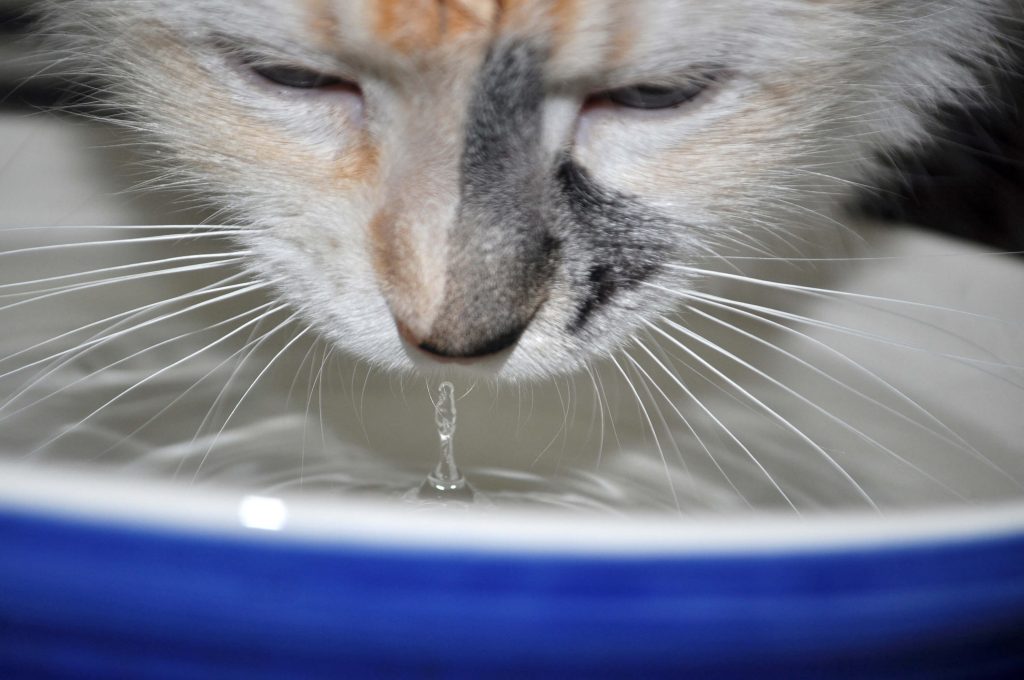
Wet food provides cats with more liquid
One way of making sure your cat gets more liquid is by giving them wet food. When you give your cat wet food, they will automatically consume more fluids. Why? Wet food contains a larger proportion of liquid than dry food, so you’ll be automatically increasing your cat’s fluid intake by giving them wet food. The percentage of liquid in wet food varies depending on the type of food, but it’s usually between 70% and 85%. If broth or sauce is added, the amount of water will increase further.
RECOMMENDATION:
Consider combining both wet and dry food. A balanced diet for your cat can consist of both types. Dry food has the advantage of contributing to dental health.
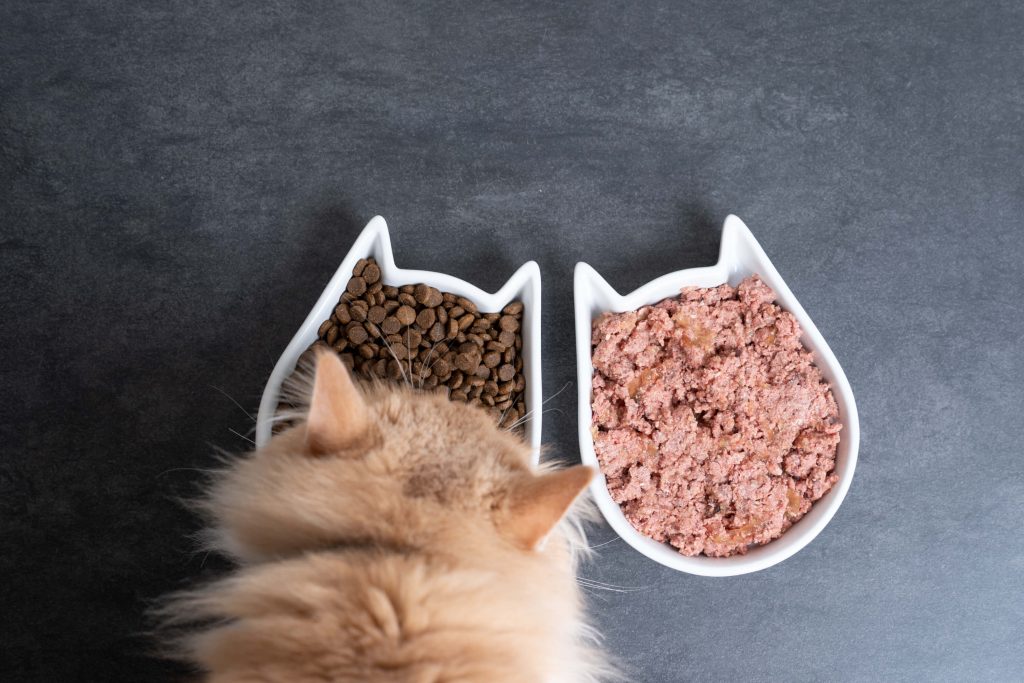
What does it mean when your cat drinks a lot?
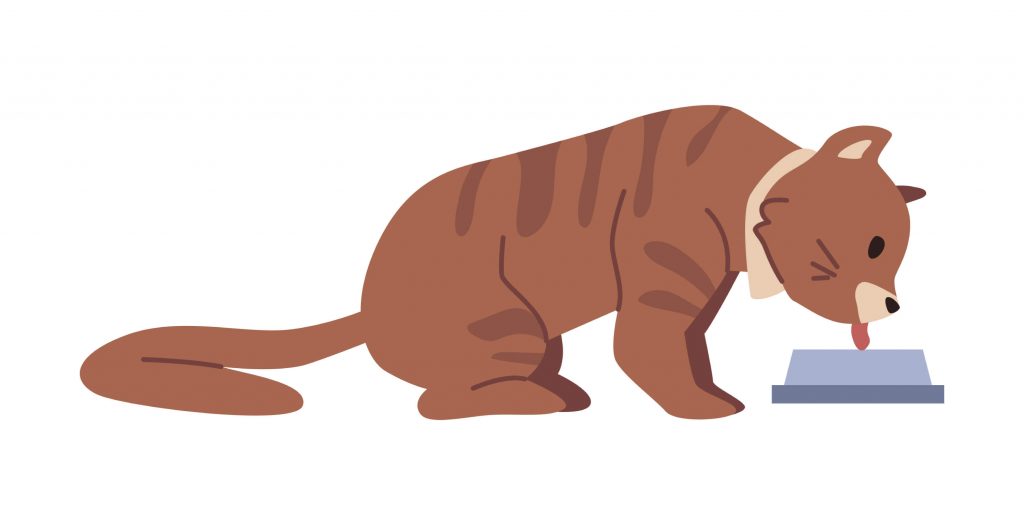
Does your cat drink a lot? If your cat suddenly starts drinking a lot more than usual, you should take a closer look at its drinking behaviour. If you notice them drinking a lot at particular times – for example, when it’s very warm or when they’ve been out exercising – it’s totally possible that this is normal and harmless. Did you perhaps recently change the type of food you give them? If you’ve started offering them a different type of food that contains less liquid, your cat will likely drink more than before. But if your little tiger is behaving oddly and has started drinking more and more, you should definitely consult a vet. Why? Because there might be some kind of health problem causing the change in behaviour.
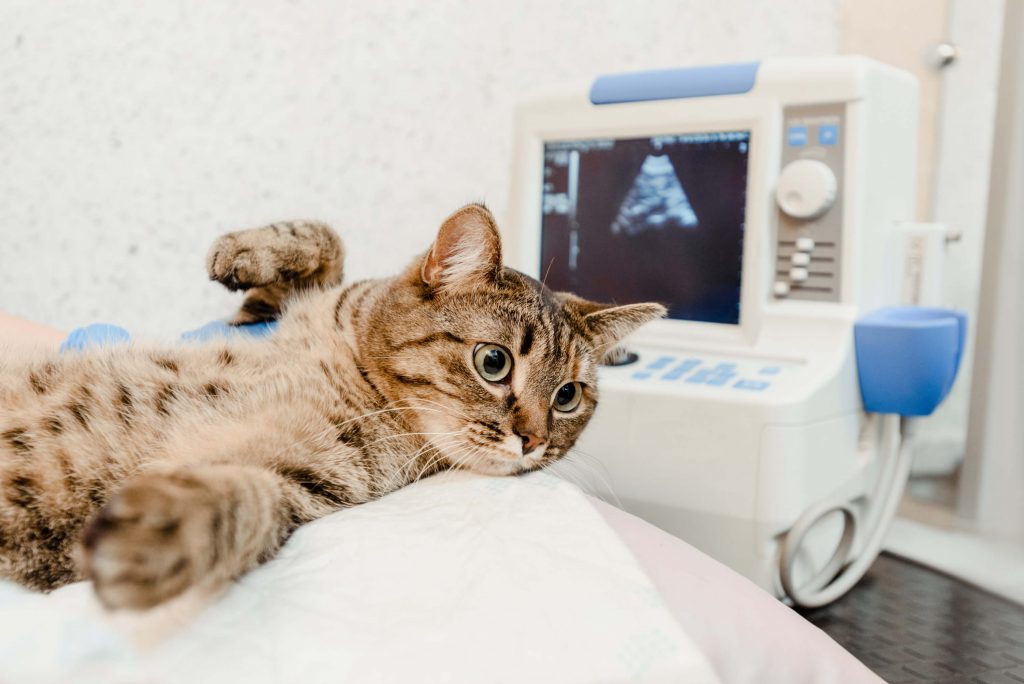
Frequently asked questions about cats not drinking
Does it seem like your cat isn’t drinking? If so, the first thing to do is to closely track their drinking behaviour and how much liquids you’re giving them over an extended period of time. Also check your cat’s physical condition on a regular basis. If they seem physically fit and as cheerful as ever, then you can be pretty sure everything’s fine!
Make sure your cat has a variety of options when it comes to drinking. Place water bowls in different places and always make sure to separate their food and water sources. Many cats like running water, so maybe give them the opportunity to drink water that’s flowing in a fountain.
Katzen sind zäh, die Fellnasen können mehrere Tage ohne Futter auskommen und von ihren Reserven zehren. Anders sieht es aus, wenn Dein Fellknäul nicht ausreichend Flüssigkeit zu sich nimmt: Ein Flüssigkeitsmangel kann bereits nach wenigen Tagen gefährlich werden!
Cats are tough little creatures and can go without food for several days, just by drawing on their reserves. But it’s a different story entirely when your cat doesn’t get enough liquids: A lack of fluids can become dangerous after just a few days!
Many cats don’t like to eat food and drink water in the same place, so you shouldn’t put those bowls next to each other. Instead, put them at a distance from one another. Also, don’t put your cat’s litter box directly next to where they eat or drink. Make sure to choose different places for all of these.
Outdoor cats that have access to outdoor water sources will have different water needs than indoor cats. And if you feed your cat wet food, they will need less water than a cat who’s fed dry food.
Cats have primal instincts that continue to influence their lives today. One of those instincts is their aversion to eating food in the same place where they drink their water. They do this to avoid conflict. Water sources are places where many animals come to drink. Cats like to avoid these kinds of encounters and prefer to eat undisturbed in an out-of-the-way area.
